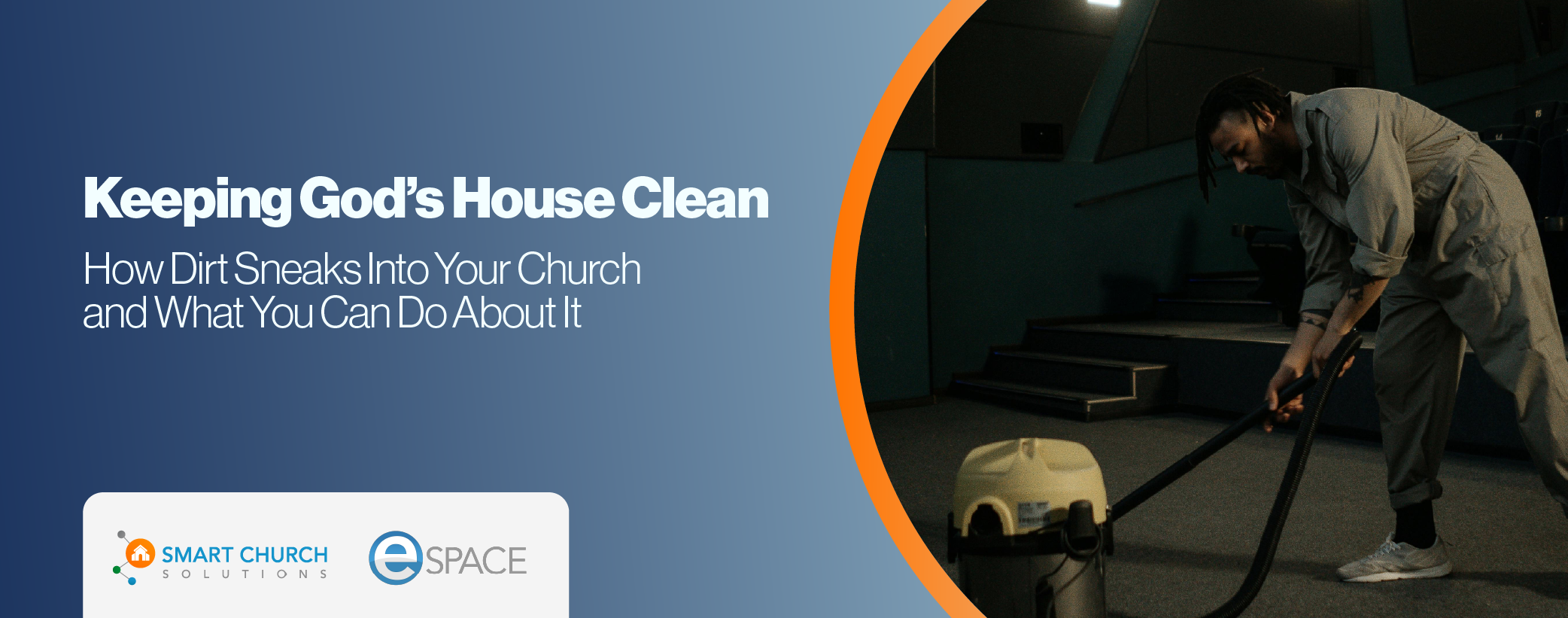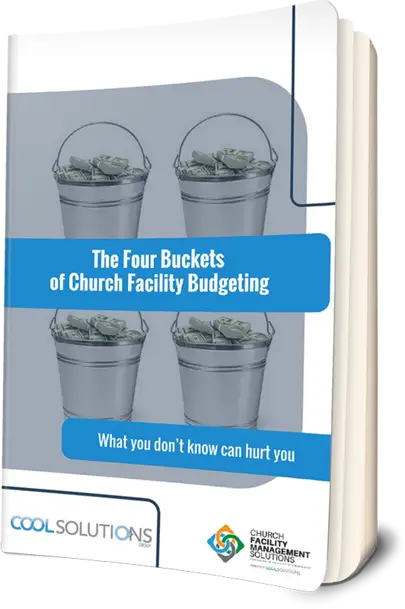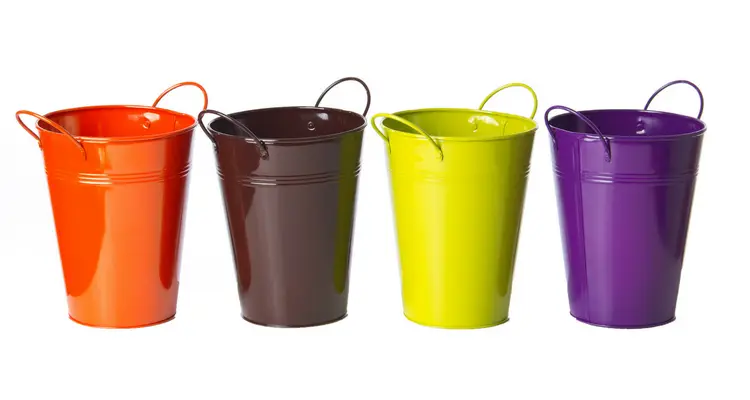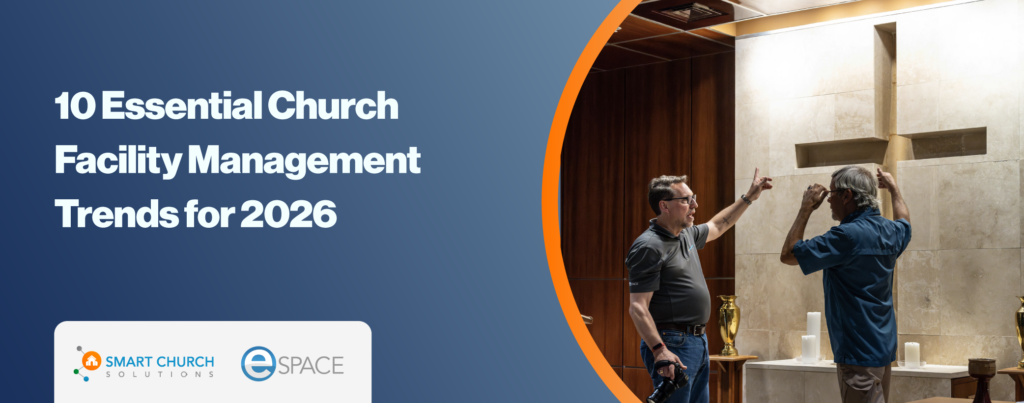Church buildings aren’t just places where services happen — they’re sacred spaces where people gather for worship, fellowship, and life-changing ministry. But no matter how carefully we care for them, dirt, dust, and debris always seem to find their way inside.
Have you ever stopped to wonder where all that dirt comes from? Or why, no matter how often you clean, it feels like you’re fighting an uphill battle?
The truth is, most of the dirt inside your church didn’t start there. It’s carried in by shoes, blown in by the wind, or stirred up by busy activity throughout the week. And while it may seem like a minor issue, unchecked dirt can damage flooring, impact air quality, and create an uninviting environment for your congregation and guests.
In the following paragraphs, we’ll unpack the most common ways dirt sneaks into your church and, more importantly, how you can take simple, effective steps to keep God’s house clean, safe, and ready for ministry
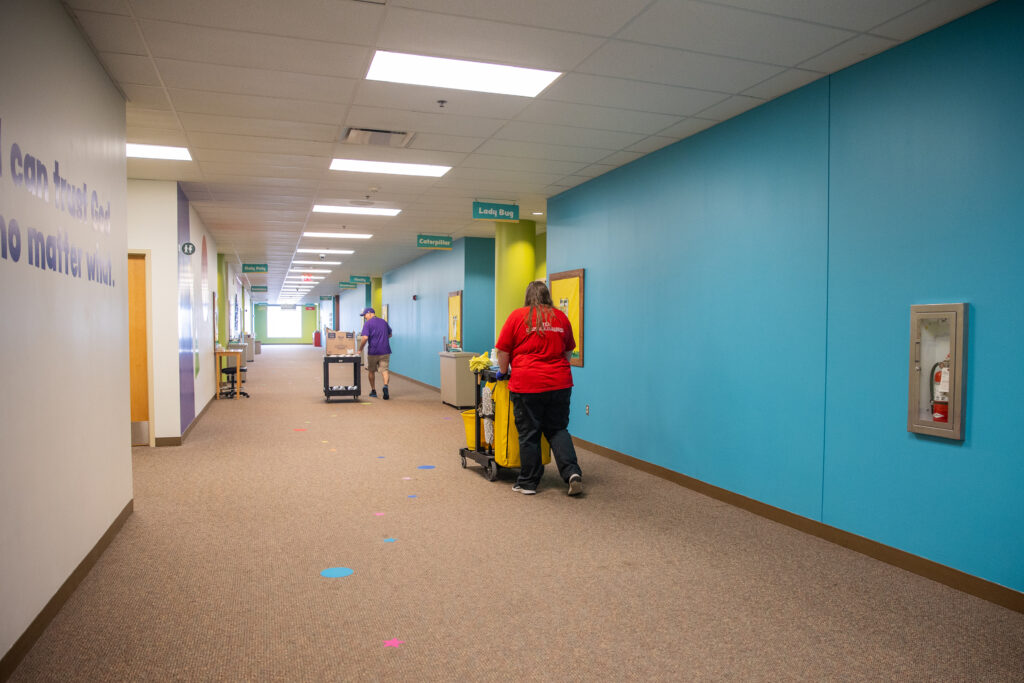
How Does Dirt Get Into Your Church?
Most of the dirt inside your church didn’t originate indoors—it was brought in. Studies show that 80-90% of dirt and contaminants in a facility come from the soles of shoes. Every time someone walks into your facilities, they bring a little bit of the outside world with them. While this might seem minor at first, the cumulative effect over days, weeks, and months can result in dirty floors, stained carpets, and increased wear and tear on your facility.
Here are the primary ways dirt makes its way into your church:
1. Foot Traffic from Entrances
Think about how many people enter your church each week—worshippers on Sundays, staff during the week, small group members, volunteers, and community guests. Every one of them tracks in dirt, dust, and debris. The highest concentrations are usually found near entrances, hallways, and main worship spaces.
2. Weather Conditions
The weather greatly influences how much dirt enters your facility. Rainy days bring mud and moisture that can create slippery floors and safety hazards. Snowy conditions introduce salt, ice, and slush, which not only cause messes but also gradually damage carpets and flooring. On dry, windy days, dust and pollen are stirred up and carried inside on shoes and through open doors, adding to the cleaning challenge.
3. Lack of Proper Entryway Matting
One of the most overlooked yet simplest solutions to dirt control is proper entrance matting. Without it, dirt moves freely from outside into your facility. A good mat system should include at least 10-15 feet of matting, both outside and inside the entrance, to trap dirt before it spreads.
Unfortunately, many churches use small, ineffective mats that don’t catch enough debris, leading to excessive dirt accumulation inside.
4. Open Doors and Windows
While fresh air is great for ventilation and can help regulate indoor air quality, leaving doors and windows open also invites dust, pollen, and debris into your church, especially on windy days. This can lead to dusty surfaces, allergens in the air, and extra cleaning demands on your custodial team. It can also affect HVAC efficiency as your system works harder to maintain indoor temperatures.
5. HVAC and Airflow Issues
A poorly maintained HVAC system can circulate dust and debris throughout your facility, making cleaning efforts even more difficult. If air filters aren’t regularly replaced, dust and allergens accumulate and spread, affecting indoor air quality and cleanliness.
6. Children’s and Fellowship Areas
Churches with children’s ministries and active fellowship spaces (i.e., lobby) tend to see more spills, food crumbs, and dirt tracked in from playgrounds and outdoor activities. These areas require extra attention to keep them clean and inviting.
How to Keep Dirt Out of Your Church
So, what can we do to minimize dirt and protect our facilities? Here are some practical and effective strategies:
1. Invest in High-Quality Entry Mats
A strong walk-off mat system is your first line of defense. Place durable, commercial-grade mats both outside and inside every entrance. The goal is to trap dirt and moisture before they get beyond the lobby or entryway. Don’t go “cheap” here and get the least expensive mat at Walmart or Amazon.
2. Clean & Vacuum Regularly
Consistent, routine cleaning is one of the simplest and most effective ways to protect your church facility. Schedule daily vacuuming of high-traffic areas like entrances, lobbies, and worship spaces to keep dirt and debris from spreading. Invest in professional-grade vacuums with HEPA filters to capture fine dust, allergens, and other airborne particles that can affect both cleanliness and indoor air quality.
In addition to vacuuming, make it a priority to mop hard floors and deep clean carpets on a regular schedule. This not only preserves the appearance of your facility but also extends the life of your flooring and prevents costly repairs down the road.
3. Consider Boot Brushes or Shoe Scrapers
For churches in areas prone to mud, snow, or heavy outdoor debris, installing boot brushes or shoe scrapers near entrances is a simple, low-cost way to reduce the amount of dirt tracked inside. These tools help remove mud, salt, and grime before it ever hits your floors, protecting carpets and flooring from unnecessary wear and keeping your entryways cleaner between routine cleanings.
4. Maintain Walkways & Landscaping
Keeping your exterior walkways, parking lots, and landscaping in good condition can reduce loose dirt, mulch, and debris from being tracked in. Sweep sidewalks regularly, remove excess leaves, and ensure that entry areas are well-maintained.
5. Keep Doors & Windows Closed When Possible
While it’s nice to let fresh air in, open doors and windows can invite unwanted dust and pollen. Be mindful of how long they remain open, especially on windy days.
6. Maintain Your HVAC System
Keep your HVAC system running smoothly by replacing air filters on schedule to prevent dust and allergens from accumulating. Regularly clean air ducts to improve indoor air quality and reduce the circulation of dust and contaminants throughout your church. Proper HVAC maintenance not only protects your facility but also creates a healthier environment for everyone inside.
7. Educate & Equip Volunteers & Staff
Facility stewardship is a shared responsibility. Train your custodial team, volunteers, and staff on best cleaning practices and how to recognize problem areas before they get out of hand.
Facility Stewardship: A Responsibility, Not a Burden
Maintaining a clean church facility goes beyond mere aesthetics; it is an essential aspect of faithful stewardship of the resources God has entrusted to us. When dirt and debris are allowed to accumulate, they not only diminish the appearance of the building but also contribute to premature wear and damage to carpets, flooring, and HVAC systems, leading to costly repairs and disruptions.
By investing in regular, proactive cleaning and maintenance, churches protect both the physical integrity of their facilities and the quality of the worship experience for their congregations and guests.
Churches are meant to be places of joy, inspiration, and welcome, not spaces burdened by disorder and neglect. Through simple, effective measures—beginning with maintaining clean entryways—we can ensure our facilities remain beautiful, safe, and prepared to serve those who gather each week in worship and community.


